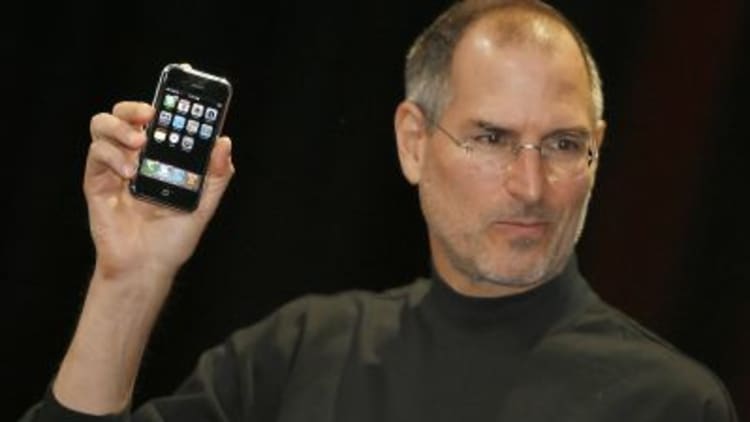Ten years ago this week, the first iPhone was released. And one of the biggest surprises for reviewers at the time was that the touchscreen actually ... worked.
"The most remarkable thing about iPhone is what's missing: a physical dialing keypad," USA Today's Ed Baig wrote at the time.
"[W]e didn't miss a stylus in the least. Despite a lack of tactile feedback on the keypad, we had no trouble tapping our fingers to activate functions and interact with the main menu," CNET editors wrote.
But breaking the bar set by BlackBerry's keyboards was one of Apple's biggest internal challenges, according to a new mini-documentary by The Wall Street Journal.
"The biggest science project of the entire endeavor, I think, for software, was the soft keyboard," former Apple executive Scott Forstall told the Journal. "We knew we had to make a keyboard, but we knew it would be compared against the BlackBerry. The BlackBerry was the most popular smartphone out at the time — it was called the 'crackberry,' right?"
But by early 2006, the iPhone keyboard still didn't have the accuracy Apple needed to ship the phone, Forstall told the Journal. Forstall said he froze development on all other apps until someone could build a better keyboard.
Within three weeks, an engineer was able to demo a much more accurate keyboard, using artificial intelligence techniques to guess what users would type next, Forstall said. For example, if a user typed "T," the next letter would likely be "H," so the area around the "H" key was set to be larger.
"The 'H' button would stay the same physical size to your eye, but the 'hit region' would grow," Forstall told the Journal. "And so when you went toward the H, you're probably going to hit the 'H' now. ... It would figure these things out."
Since then, artificial intelligence has become central to mobile technology, as companies like Google move toward "AI-first" interfaces.
WATCH: CNBC puts the first-generation iPhone to the test



